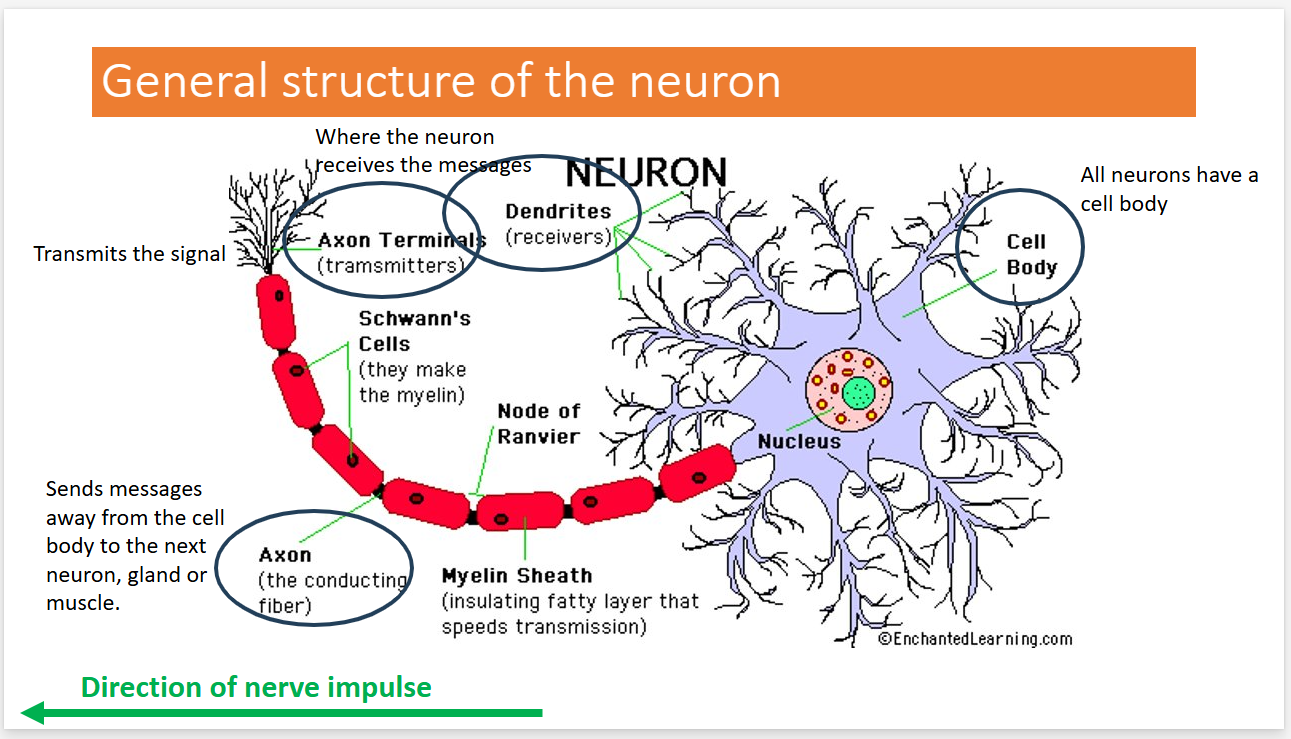Nervous System
Body Coordination and Nervous System
The nervous system is responsible for coordinating various muscles and glands in response to both internal and external stimuli.
The nervous system helps all the parts of the body to communicate with each other.It consists of two major parts:
Central Nervous System (CNS): Includes the brain and spinal cord.
Peripheral Nervous System (PNS): Comprises all other neural elements.
The Peripheral Nervous System (PNS) acts as a communication network, relaying messages between the brain and spinal cord (the Central Nervous System or CNS) and the rest of the body
It plays key role in both sending information from different areas of your body back to your brain, as well as carrying out commands from your brain to various parts of your body.
Levels of Organisation in the Body
The correct order for body levels of organization is:
Cells → Tissues → Organs → System
This hierarchy shows how smaller units combine to form larger functional structures.
Control and Regulation
The body can respond to changes in the environment through a system of signaling:
Stimulus: Any information received by the body that provokes a response.
Receptors: Structures that detect stimuli and relay information to effectors for a response.
Types of Receptors
The body has five main senses that function as receptors:
Hearing
Smell
Taste
Touch
Vision
These senses allow the detection of the external environment and are further classified based on the type of stimuli they respond to:
Mechanoreceptors: Detect movement (found in ears, skin, arteries).
Chemoreceptors: Sense chemical changes (found in tongue, nose). (taste, smell)
Thermoreceptors: Sense temperature variations (found in skin and hypothalamus). (heat)
Photoreceptors: Detect light (found in the retina of the eyes).
Neuron Structure and Function
Neurons are specialized cells that transmit signals in the nervous system.
Structure of a Neuron:
Dendrites: Receive messages from other neurons.
Cell Body: Contains the nucleus and transmits signals.
Axon: Sends messages away to other neurons, muscles, or glands.
Neurons communicate by converting electrical signals into chemical signals to transmit messages across synapses:
When a receptor detects a stimulus, an electrical signal is sent along the neuron and converted into a chemical signal for another neuron or effector (e.g., muscle).
Neuron Types and Functions
There are three main types of neurons based on their location and function:

Sensory (Afferent) Neurons: Carry information from receptors to the CNS.
Motor (Efferent) Neurons: Carry information from the CNS to effectors (muscles and glands).
Interneurons: Connect neurons within the CNS, facilitating communication between sensory and motor neurons.
Neuron Type
Structure
Function
Sensory Neuron
Long dendrite, short axon. Cell body in the middle or side of the axon.
Carries impulses from receptors to the CNS.
InterNeuron
Short dendrites and axons. Found entirely in CNS.
Connects sensory and motor neurons.
Motor Neuron
Short dendrites, long axon. Cell body at one end.
Carries impulses from CNS to effectors.
Stimulus-Response Model
Conscious action
Stimulus receptor (sensory neuron) BRAIN (interneuron) effector (motor neuron) response
Reflex action
Stimulus receptor SPINAL CORD effector response
Reflexes
A reflex is a rapid, automatic response to a stimulus aimed at protecting the body from harm.
Reflex arcs facilitate quick responses:
Composed of sensory neurons, interneurons, and motor neurons.
Examples of reflex actions include blinking in response to dust or pulling away from a hot object.
Success Criteria for Understanding the Nervous System
After studying the nervous system, students should be able to:
Define the terms stimulus and receptor.
Identify different types of receptors and their functions.
Describe the structure and components of the nervous system.
Compare the structure and functions of sensory, motor, and interneurons.
Illustrate a stimulus-response model for conscious actions and reflexes.
Differentiate between conscious actions and reflexes in terms of neural pathways and reactions.
Example of Nerve Communication
Light enters the eye, stimulating a photoreceptor.
A message travels down the optic nerve to the occipital lobe in the brain.
The occipital lobe processes the visual information and sends instructions to the frontal lobe where muscle movements are planned.
The signal travels from the frontal lobe down the spinal cord to the arm muscles.
The finger muscles contract, allowing the individual to catch an object like a falling ruler.